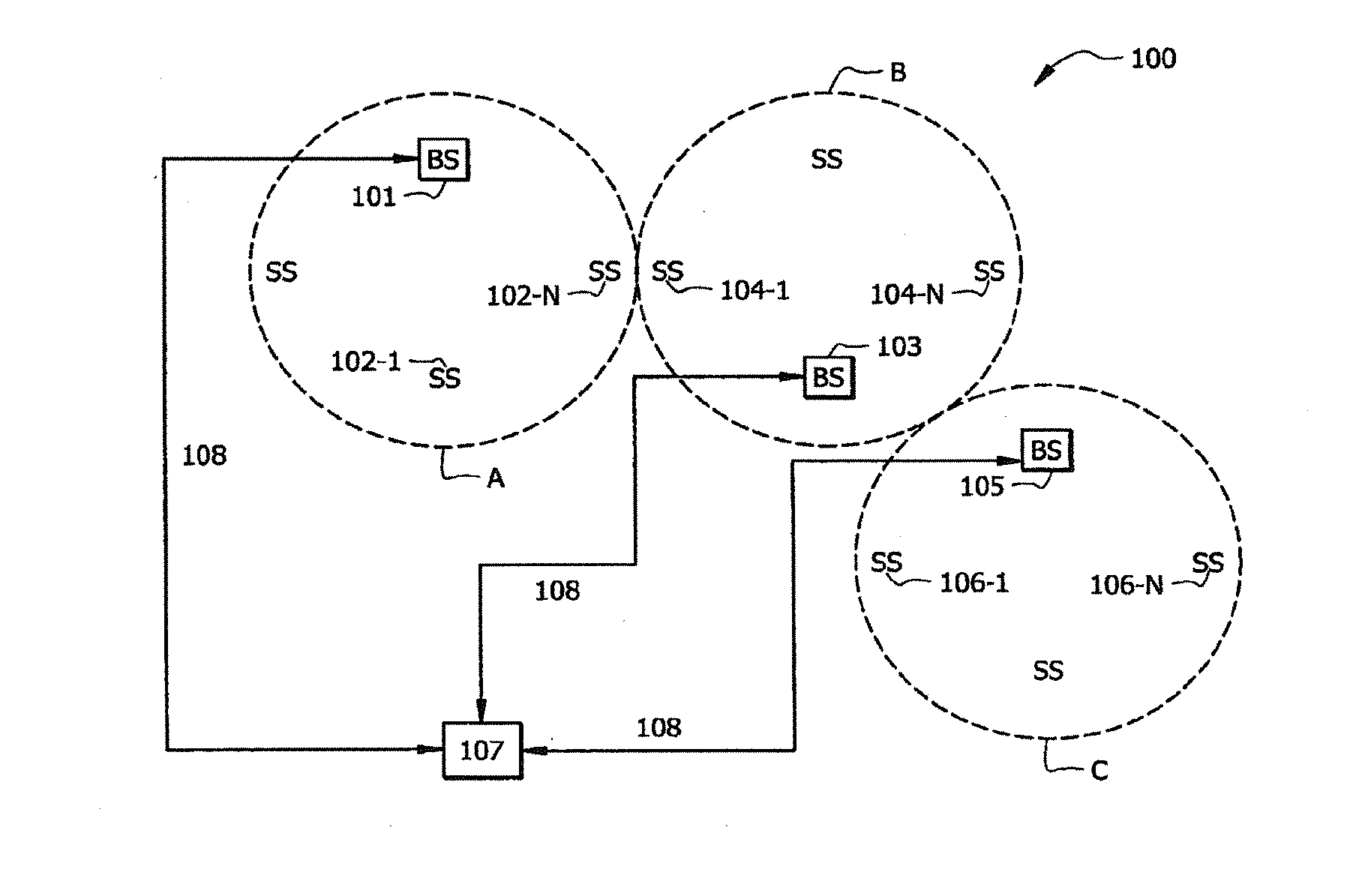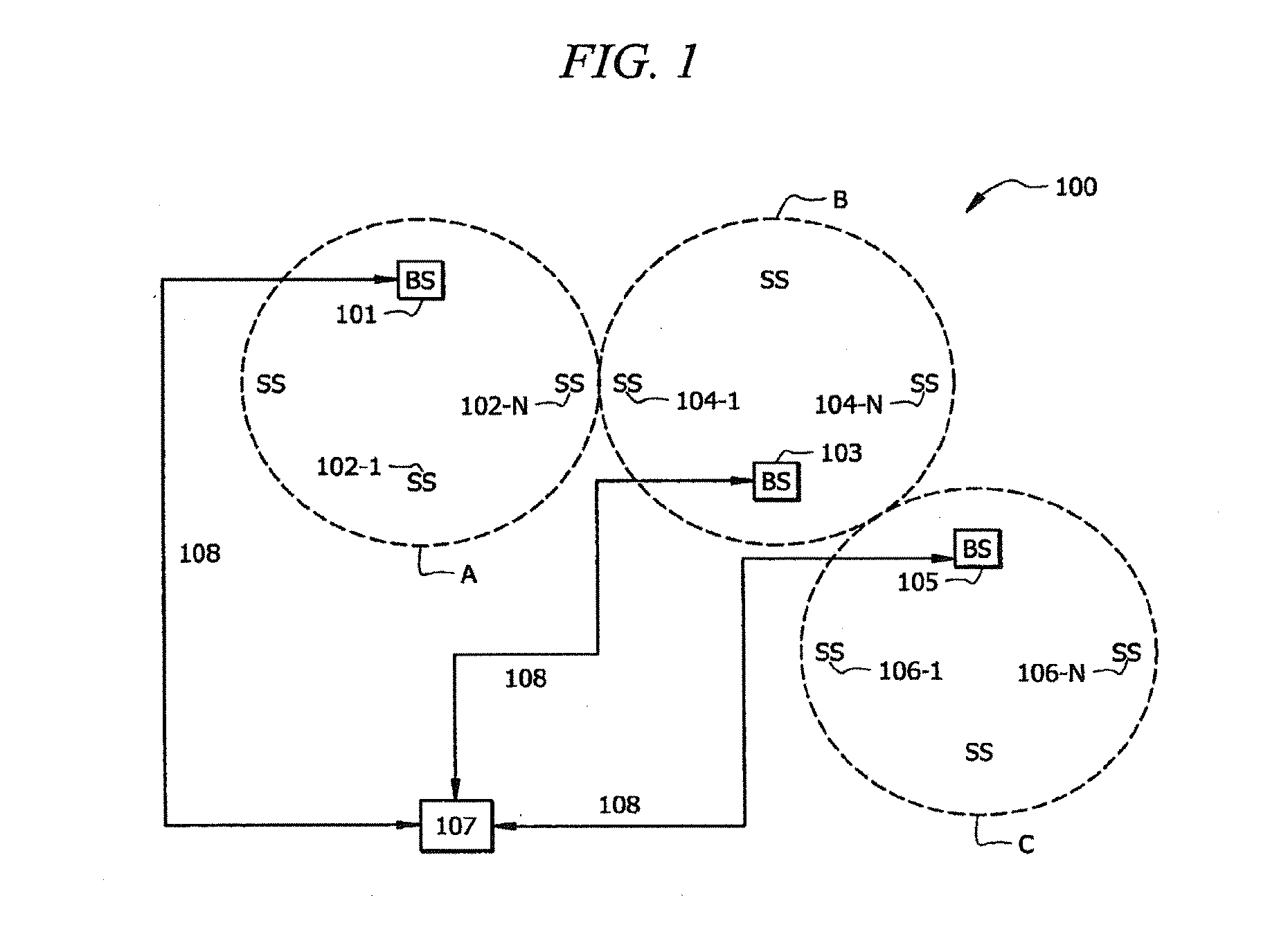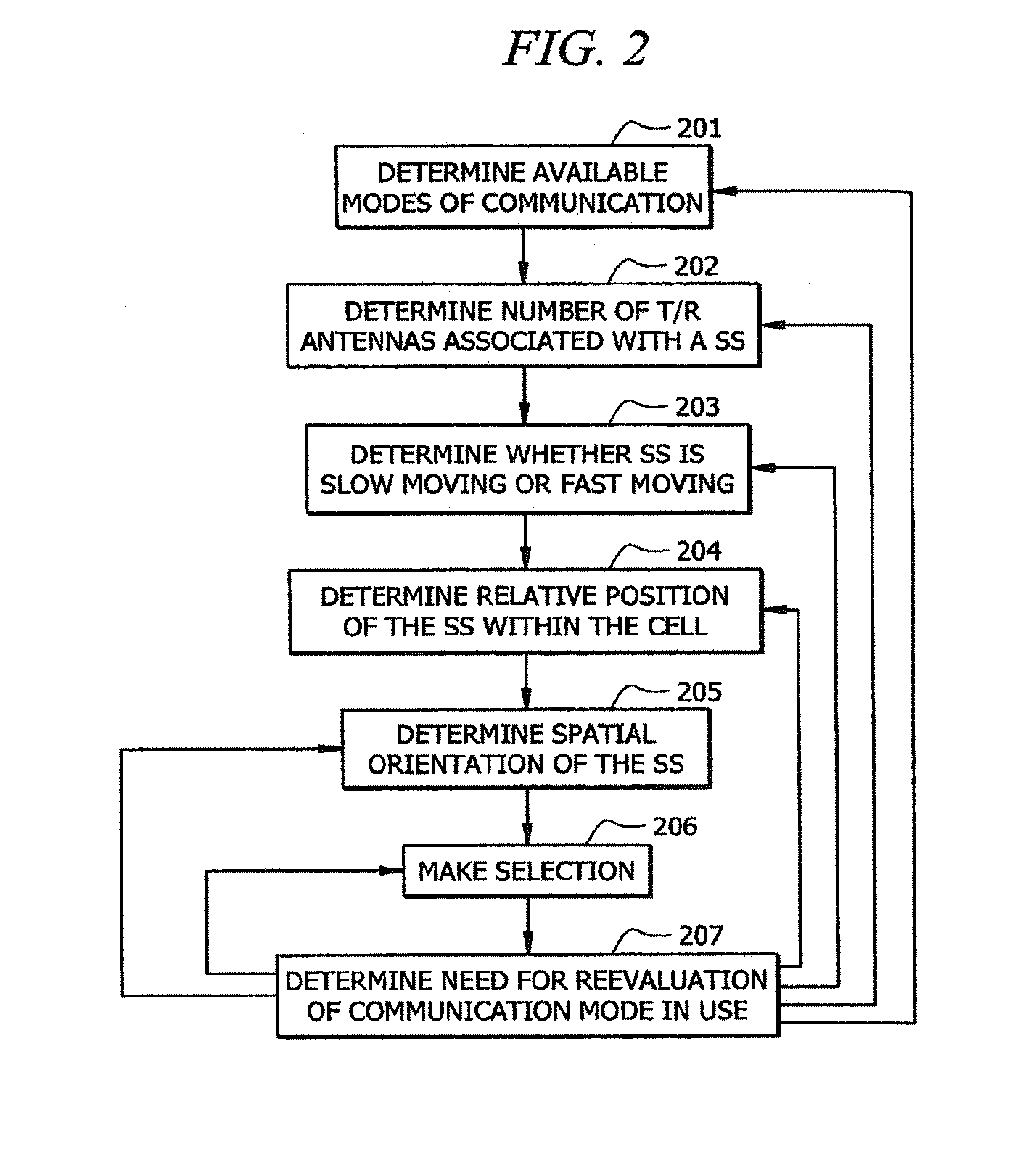Intelligent Mode Switching In Communication Networks
a communication network and intelligent mode technology, applied in the field of intelligent mode switching in communication networks, can solve the problems of limited usefulness under other conditions, limited effective use, and less efficient use of available spectrum, and achieve the effect of maximizing the overall system capacity and facilitating on-the-go switching
- Summary
- Abstract
- Description
- Claims
- Application Information
AI Technical Summary
Benefits of technology
Problems solved by technology
Method used
Image
Examples
Embodiment Construction
[0014]Referring to FIG. 1, communication system 100 is adapted to provide intelligent communication mode switching in the uplink (communications from the SS to the BS) and the downlink (communications from the BS to SS). System 100 can be generalized to most communication networks and includes network components as known in the art adapted to provide operation as described herein. BS 101 communicates with SS 102-1 through 102-N and vice versa in cell A, BS 103 communicates with SSs 104-1 though 104-N and vice versa in cell B, and BS 105 communicates with SSs 106-1 through 106-N and vice versa in cell C. Each of BS 101, 103, and 105 communicate on “backhaul” network 107 via communication means 108. Communication means 108 may comprise phone lines, RF communication components, and the like as known in the art.
[0015]As will be described in greater detail below, system 100 implements an intelligent methodology whereby an iterative process is executed to select, from a number of possibil...
PUM
 Login to View More
Login to View More Abstract
Description
Claims
Application Information
 Login to View More
Login to View More - R&D
- Intellectual Property
- Life Sciences
- Materials
- Tech Scout
- Unparalleled Data Quality
- Higher Quality Content
- 60% Fewer Hallucinations
Browse by: Latest US Patents, China's latest patents, Technical Efficacy Thesaurus, Application Domain, Technology Topic, Popular Technical Reports.
© 2025 PatSnap. All rights reserved.Legal|Privacy policy|Modern Slavery Act Transparency Statement|Sitemap|About US| Contact US: help@patsnap.com



